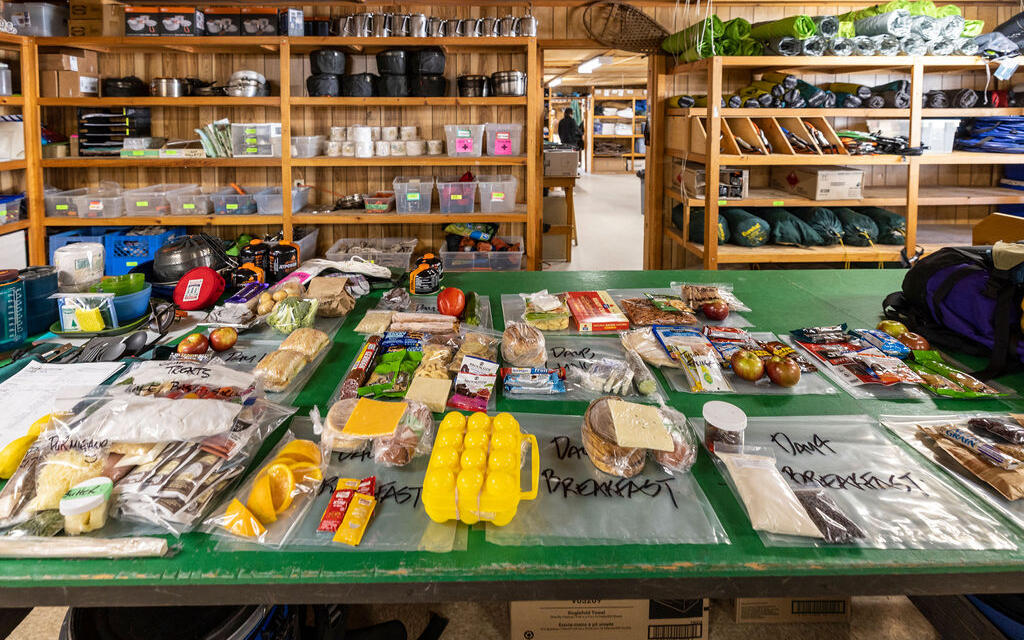Are you ready to immerse yourself in the beauty of Ontario's Highlands through a thrilling canoe, camping or hiking adventure? Whether you're a novice camper or a seasoned outdoor enthusiast, proper planning and packing are essential for a successful and enjoyable trip.
In this guide, we'll walk you through everything you need to know to pack for a 3-day canoe camping or hiking trip in Ontario's Highlands.
Planning Your Adventure
Before you set out on your journey, thorough planning is key to ensure a smooth and memorable experience. Start by researching the local regulations and obtaining any necessary permits for camping. Across Ontario’s Highlands there is a range of campsites, from car-accessible to backcountry, so choose the option that best suits your preferences and experience level.
Once you've secured your permits, plan your route carefully, considering factors such as distance, terrain, and points of interest along the way. Be sure to check the weather forecast for the duration of your trip and pack accordingly, keeping in mind the unpredictable nature of the wilderness.

Packing Your Gear
Packing the right gear is essential for a comfortable and safe canoe camping or hiking experience. Identifying what equipment you already have and what you might need to add to the gear list is an important first step. There are local outfitters and outdoor service providers which can outfit you from head to toe with all the necessary equipment for an exceptional outdoor experience. There are both options to rent a la carte items, full outfitting packages, guided trips or alternatively purchase.
Start with shelter essentials, including a sturdy tent with a rainfly or tarp for protection against the elements. Don't forget to pack a groundsheet or footprint to protect the tent floor from moisture and abrasion.
For a good night's sleep in the tent make sure to bring along a sleeping bag rated for the expected temperatures and a sleeping pad or air mattress for added comfort. Cooking gear is another essential consideration, so be sure to pack a portable stove or campfire cooking equipment, along with fuel, and cooking utensils. Prior to travel and once arriving it's always good practice to check on fire regulations to make sure there isn’t a fire ban in effect.
Planning Your Meals
Proper meal planning is crucial for maintaining energy levels during your camping adventure. Plan easy-to-prepare meals that provide sufficient nutrition for your outdoor activities. Pack lightweight, non-perishable foods that won't weigh you down during your travels. High-energy snacks like nuts, dried fruits, and energy bars are perfect for quick boosts of energy throughout the day.
Don't forget to stay hydrated by bringing along sufficient water or a water filtration system. Consider packing electrolyte packets or drink mixes to replenish electrolytes lost through exertion.

Remember to store your food securely to prevent wildlife encounters, using bear-resistant containers or hanging systems.
Packing Your Clothing
Choosing the right clothing is essential for staying comfortable and protected in the outdoors. Opt for moisture-wicking base layers to keep you dry and comfortable during physical activities. Layering is key for regulating body temperature, so pack insulating layers for warmth and waterproof outer layers to protect against rain and wind.
Sturdy hiking boots or shoes with good traction are essential for exploring the trails, while camp shoes provide comfort around the campsite. Protect yourself from the sun with a wide-brimmed hat and stay warm during cooler evenings with a beanie or fleece hat.
Additional Essentials
In addition to your camping gear and clothing, don't forget to pack essential items for safety and convenience. A well-stocked first aid kit is essential for treating minor injuries and ailments, so be sure to include bandages, antiseptic wipes, and pain relievers. Don't forget any necessary prescription medications.
Personal items such as toiletries, sunscreen, insect repellent, and a headlamp or flashlight with extra batteries are also important for your comfort and safety. Finally, include emergency supplies such as a multi-tool or knife, fire-starting materials, and emergency shelter for unexpected situations.

Before You Depart
Before embarking on your canoe camping adventure, take the time to ensure that all your gear is in good condition and properly packed. Test your camping stove and other equipment to ensure they are functioning correctly. Share your itinerary with a trusted friend or family member, providing details of your planned route and expected return date.
Familiarize yourself with Leave No Trace principles to minimize your impact on the environment and preserve the wilderness for future generations.
With this comprehensive guide, you're ready to embark on your hiking or canoe camping adventure. So gather your gear, load up your canoe, and get ready to explore the stunning beauty of Ontario's Highlands.





